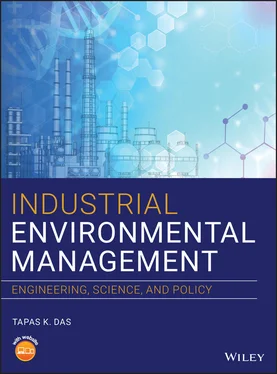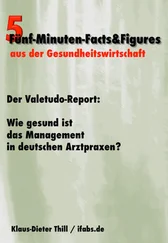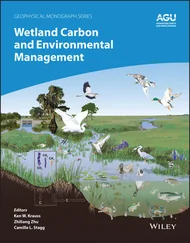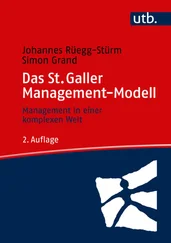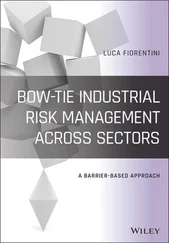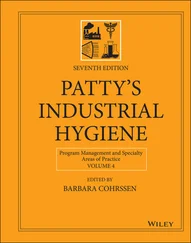Of this mass, roughly 75% is mineral and nonrenewable, and 25% is from biological sources. Of the biological materials, none of the food or fuel becomes part of durable goods and even most timber is burned as fuel or made into pulp and paper products that are disposed of. Of the mineral materials, about 80% of the mass of the ores is unwanted impurities, and of the final products, a large portion is processed into consumables and throwaways. Only in the case of nonmetallic minerals is as much as 50% of the mass embodied in durable goods such as cement and ceramics (Allenby and Richards 1994). All of this translates into an estimated more than 12 billion T of industrial wastes annually in the United States (Allen and Rosselot 1997).
In addition to materials lost as waste residuals during extraction and processing, finished goods are dissipated/lost because they are present in concentrations too small to be economically recoverable. Many products are inherently dissipative, and lost with a single normal use. These include packaging, lubricants, solvents, flocculants, antifreezes, detergents, soaps, bleaches, dyes, paints, paper, cosmetics, pharmaceuticals, fertilizers, pesticides, herbicides, and germicides. From one‐half to as much as seven‐eighths of the toxic heavy metals including lead, cadmium, chromium, cobalt, in insecticides (arsenic) and in wood preservatives, fungicides, catalysts, and plastic stabilizers are dispersed into the environment beyond economic recoverability. Other materials are lost to uses that are not inherently dissipative but are so in effect because of the difficulty of recycling. Allenby and Richards (1994) point out that the total elimination of manufacturing wastes probably is an unattainable goal because it would require, in addition to technological advances not yet in place, 100% cooperation by consumers.
1.11.1 Recycling of Materials and Reuse of Products
A critical element of an interim strategy is enhanced recovery. This can be approached from two directions: reuse of products and recycling of materials. Reuse of products includes return, reconditioning, and remanufacturing. The energy required for reuse and recycling is one of the key factors determining recoverability of a product. The closer the recovered product is to the form it needs to be in for recycling, the less energy is required to make that transformation. From the standpoint of economic development it is worth pointing out that the reconditioning or remanufacturing cycle is relatively less costly; it requires roughly half the energy and twice the labor per physical unit of output.
Recycling materials means closing the loop between the supply of post‐consumer waste and the demand for resources for production. Recycling of materials will be the business of the Zero Emissions engineer; reuse of products will also involve the Zero Emissions engineer, but it will have lots of front‐end work from another professional, the concurrent engineer. Concurrent engineering, which incorporates aspects of industrial engineering, product design, and product manufacturing, is an integrated approach that seeks to optimize materials, assembly, and factory operation. These engineers examine the broader context of a product, including technology for managing the environmental impacts of its transport, intended use, recyclability, and disposal, as well as the environmental consequences of the extraction of the raw material used in its production.
The ultimate fate of all materials is thus dissipation, being discarded, or recycling and recovery. With 94% of materials extracted from the environment being converted to wastes, current levels of recovery are clearly not sufficient. Recovery of materials from wastes will reduce the extent of resource extraction (but will not slow the speed of material flows through the economy). Aluminum and lead are two resources currently being heavily recycled, but evidence shows that there is potential for a lot more resources to be recovered from wastes.
Sherwood plots are diagrams that permit the graphic comparison of concentrations of materials in nature against their commodity cost. The sample plot in Figure 1.7shows that the price for a commodity depends on its concentration in nature before extraction and refining. Figure 1.8is a similar plot for metal price (2004) as a function of dilution (concentration) of metals in commercial ores; the relationship illustrates the concept that the more dilute a material is in its native ore, the more expensive it will be to purify into a commodity material (Johnson et al. 2007).
Together, the Sherwood plots demonstrate the recovery potential of materials. The elements plotted above the line in Figure 1.7should be vigorously recycled because they are present in individual by‐products in relatively high concentrations. Lead, zinc, copper, nickel, mercury, arsenic, silver, selenium, antimony, and thallium are more economical to recover from waste than from nature. Extensive waste trading could significantly reduce the quantity of material requiring disposal because resource extraction uses from wastes, not virgin feedstocks (Allen and Behmanesh 1994).
One critical component of the industrial ecology paradigm is dematerialization. Dematerialization means using less material to make products that perform the same function as predecessors. Sometimes this means smaller or lighter products, but other aspects can include increasing the lifetime of a product or its efficiency. The net effect is a reduction in overall resource extraction. Dematerialization is thus a way to increase the percentage of active materials embodied in durables, and to reduce the percentage that is left as waste residuals.
However, dematerialization has limits in achieving Zero Emissions . We may also need to think of rematerialization – products that may or may not have a lighter weight in their final form, but whose production, use, and subsequent conversion or recyclability fits within the Zero Emissions paradigm. This is demonstrated by the ease and benefit of recycling older model cars versus the newer ones. Nonetheless, economists and engineers point out that optimizing for environmental protection alone means some loss in safety, efficiency, durability, convenience, attractiveness, and price.
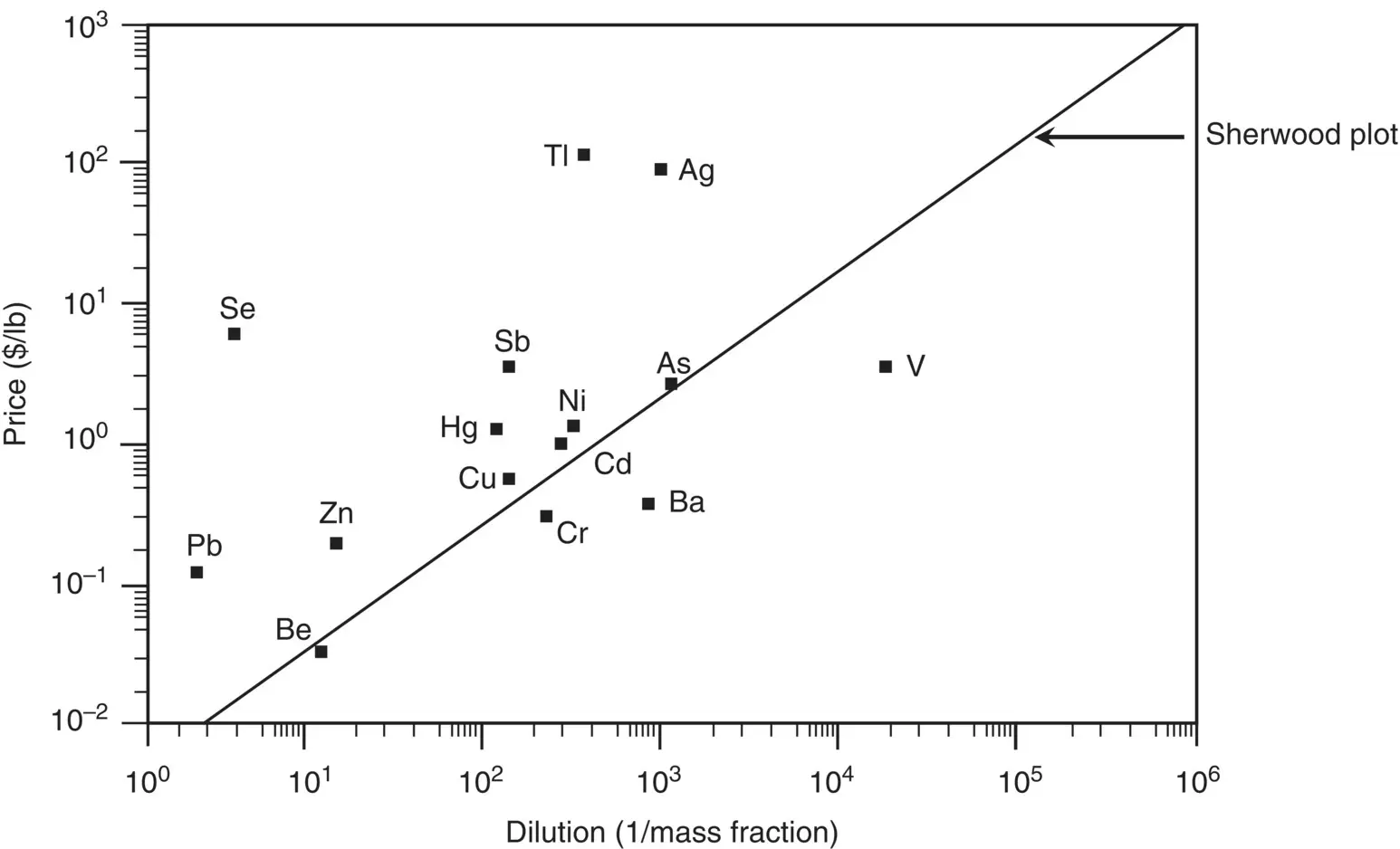
Figure 1.7 Metals‐specific Sherwood plot for waste streams: minimum concentration of metal wastes undergoing recycling versus metal prices.
Source: From Johnson et al. (2007). American Chemical Society.
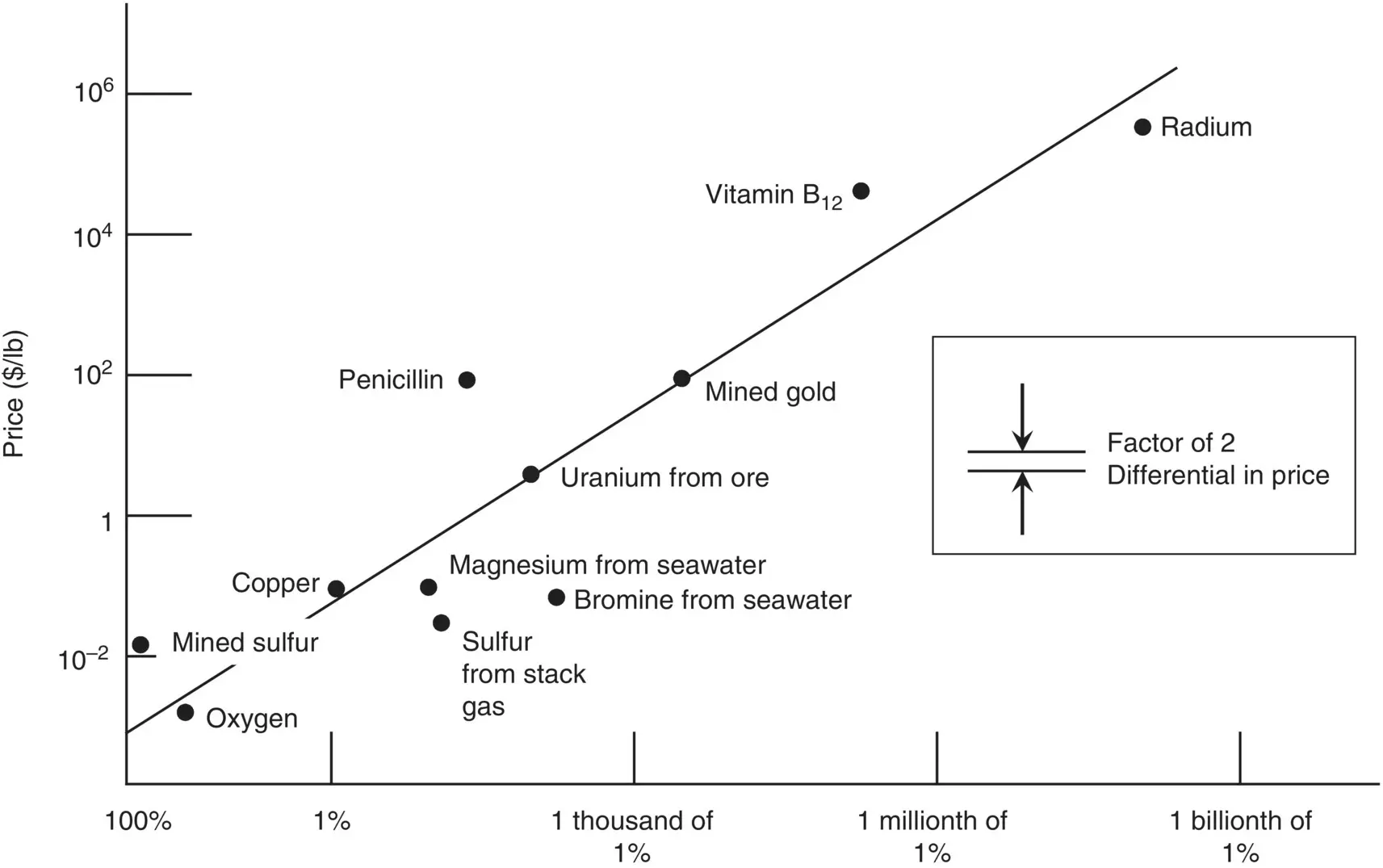
Figure 1.8 A Sherwood diagram showing the correlation between the selling price of materials and their degree of dilution in the matrix from which they are separated.
1.11.3 Investment Recovery
During the transition to Zero Emissions, another early need will be for companies to fill the “decomposer niche,” a term for a specialized form of recycling developed by Raymond Cote at Dalhousie University in Ottawa (1995). Just as decomposer organisms turn dead animals and vegetable matter into forms that can become food for other animals and plants, decomposer niche companies will “consume” otherwise unusable wastes by processing them into usable feedstock or disassembling equipment and marketing reusable components and materials.
The work of decomposers also can be visualized as investment recovery. Taking a systematic approach to ending waste, investment recovery is a traditional service, according to Cote, “an integrated business process that identified, for redeployment, recycling, or remarketing, nonproductive assets generated in the normal course of business.” These assets include idle, obsolete, unused, or inoperable equipment, machinery, or facilities; excess raw materials, operating inventories, and supplies; construction debris; equipment and fixtures in facilities scheduled for demolition; off‐grade, out of specification, or discontinued products; and process waste (Cote 1995, 2003).
Читать дальше
